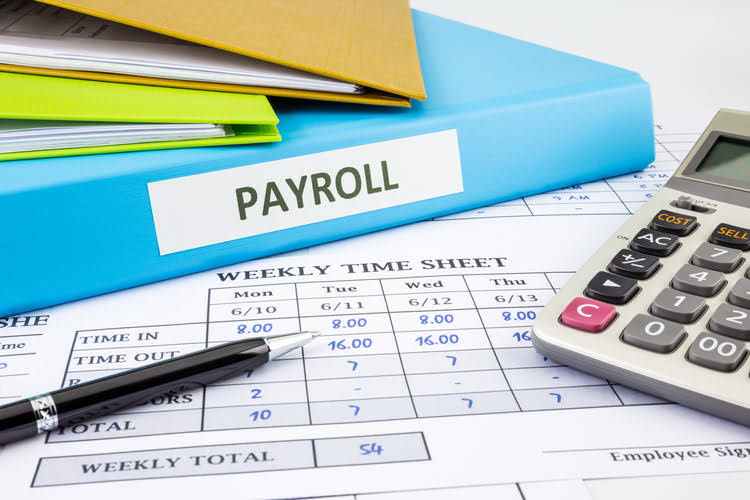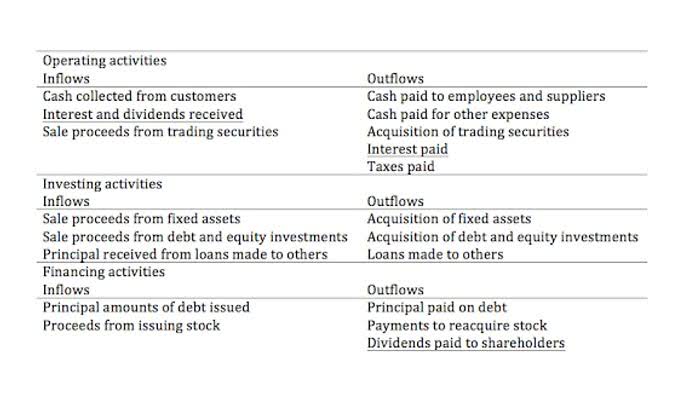What you need to know about running payroll in the United States of America
.jpg)
We can pay for that, so you can buy dental and health and with health you can also get vision. It’s very expensive because basically we are paying, I guess what the hospital would pay, but they open it up to us, where the employees might pay $35 a pay period. So we’re paying a lot bigger chunk of our paycheck towards benefits than they do. We pay out-of-state California income tax, you know, but we still pay California income tax and we get no benefits from California.
- So it’s really important also that a company guides their employees and understands those laws because the company will be held accountable and the employee will be held accountable for not complying.
- You can have your employees e-sign their I-9s and W-4s, and they can easily view and download their W-2s and 1099s at the end of the year.
- But in reality, the backbone of the economy are the small businesses, tens of millions of small businesses, and that’s what makes United States such a gig economy.
- ADP payroll is one of the most popular choices on the market for payroll software.
- If it’s important to you to have 24/7 access to support, ADP has you covered.
- With ADP, you can start processing payroll at any time, not just a new quarter or new year.
- Payroll software housed in the cloud provides a scalable, flexible solution which can grow with your business over time.
How To Choose Payroll Software For Your Small Business
If you’re switching providers, you can ease the transition process by asking for all the necessary forms and information upfront. Get the small business payroll and tax solutions and support you need — when and how you need them. Most states require you to provide a pay statement in either print or electronic format at the time wages are paid. Some laws allow employees to opt in or out of electronic statements and you may have to ensure they are able to easily view or print their pay information. The federal government does not require lunch or meal breaks, but most states do. When offering rest periods, clearly define their length and let employees know if the break is paid or unpaid and if they need to clock their time.
How Social Media Niche Influencers Can Help Your Business Dominate in Specific Markets
- ADP offers a processing service with a hosted platform for our clients to manage data entry; or a managed service offering online payroll services, solutions and software for businesses of all sizes.
- Errors are generally inevitable whenever a new solution is implemented.
- However, you’ll need to purchase a higher-tier plan if you want access to more advanced features.
- ADP’s all-in-one suite of payroll and HR services can free you up to focus on your business’s most pressing needs.
- We offer direct deposit and mobile payroll solutions that integrate with time and attendance tracking.
- Running payroll online is one of the most important aspects of any successful business, but that doesn’t mean it has to be stressful.
It stays updated with the latest tax laws and regulations, ensuring compliance and simplifying the year-end tax filing process for businesses. ADP provides flexible payroll services that help to simplify payroll, so you can scale up or down depending on your business needs. We manage the complexities and day-to-day tasks of payroll, so you can focus on running your business. By ensuring greater accuracy and seamless integration, our cloud-based technology also delivers insights to help you make more informed decisions. Our platform lets you access a wide range of workforce-related reporting services, delivering reports from headcount to labour cost analysis, across geographies and employee populations. ADP offers our own unified HCM solutions built on top of ADP payroll.
How do I choose the best payroll software for my business?
When you consider these ramifications, it’s often best to dedicate the necessary resources, whether it’s time or money, to make sure you get payroll right. The method you choose to process payroll will determine how long it takes. Manual calculations can take hours to days, depending on how many employees you have and the laws that you must comply with. If you’re a large business that operates across state lines, processing payroll this way is usually unfeasible. A more efficient approach is to use payroll software, which can run payroll in minutes thanks to automation. Employers can hire someone specifically for this purpose, but in most cases, the role is filled by an office manager, human resources director or even the owner.
.jpeg)
EINs also commonly appear on business loan applications and credit reports. ADP offers more advanced compliance support than Paylocity, particularly for businesses operating in multiple states or countries. It does this through built-in tools and the monitoring of regulatory changes. Paylocity also provides compliance tools, but focuses more on domestic businesses. If you’re seeking a truly unified solution, Rippling stands out as a superior alternative to both ADP and Paylocity. Unlike traditional payroll systems that either focus on one function or have added on modules piece by piece, Rippling integrates HR, IT, and finance into one innovative platform.
Which platform offers better compliance support?
Compared to manual data entry, online payroll software can save you considerable time. The features available in the package you choose will ultimately determine your total work effort. How your payroll administrator manages time and attendance – whether it’s a time clock, a mobile app or a pencil and paper – is entirely up to you. Keep in mind, however, that doing it manually opens the door to human error.
Because each state in the US can decide for itself if it wants to collect a state income tax for its residents, April’s specific situation meant that she could avoid paying two state taxes. But as she just said, that’s not always going to be the case, if someone lives in a state that does tax income. But just because April’s taxes weren’t too complicated, doesn’t mean that she didn’t face any issues with her arrangement. In order to stay on top of all of this, ADP’s what is adp payroll team in the USA has a legislative management team that even advises the government of the United States about legal changes on a federal level. With ADP’s decades-long experience in the country, clients can rest assured that they’ll remain compliant despite a complex, patchwork-like regulatory landscape.
However, some non-exempt employees may earn a salary, in which case, their hours must be tracked to ensure any overtime work is paid, as required by law. Put simply, a payroll management system is the process by which employers pay wages to their employees. It’s also how they demonstrate their commitment to their workers, fulfill their obligations to government agencies and keep financial records in order. With three plans, Gusto is scalable for small businesses with limited payroll needs and bigger national enterprises with hundreds of employees. ADP TotalSource is a professional employer organization, or PEO, solution for small businesses.
How do ADP payroll services work?
Document the recordkeeping laws that apply to you and how you will maintain confidentiality. Yes, ADP Payroll is designed to handle a wide range of payroll complexities, including diverse pay structures, varied employee types, and compliance with different tax jurisdictions. ADP understands that businesses vary in size, complexity, and needs, which is reflected in their diverse pricing models. That said, ADP Payroll operates on a quote-based pricing system, tailoring its costs to the specific needs and scale of each business.


















.jpeg)
.jpeg)